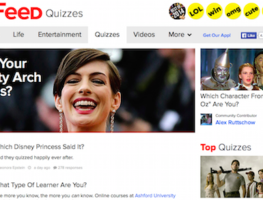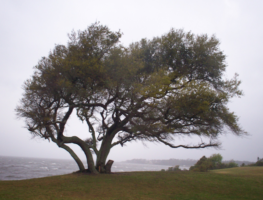Recently I had the honor to join my hermanas y hermanos from NWDC Resistance at a Día de los Muertos event. Appropriately, the celebration took place outside one of the most prominent monuments to death in the US: the Northwest Detention Center in Tacoma.
The NWDC Resistance movement is not religious, at all, but their praxis is nothing short of prophetic.
Maru Mora, a leader in the movement, introduced the celebration telling us that Mexicans laugh at everything, including death. This day of the dead procession was a way to laugh at Immigration and Custom Enforcement (ICE), and at GEO, the corporation running and profiting from migrant detention. Through our marching, we would simultaneously mourn with those who have lost their loved ones to deportation; remember those who have died crossing the border trying to reunite with their families; and declare freedom over oppression. In laughing at GEO, we would proclaim their lack of power over us. She invited us to “claim this space” (the street outside NWDC) against the horrors brought about by GEO and ICE upon migrant families. The procession carried two coffins; one for the children who have died and another for the adults. Yet, the name on the coffins was “GEO.”
The juxtaposition of deadly oppression with life-giving resistance deeply echoed the kingdom that is here and at the same time yet to come. Colorful outfits, decorations, altars, and bubbly children’s laughs were a slap in the face to the sterile and oppressive statement of corporate bullying that is the NWDC.
And therein laid the strength of our march–We laughed as we mourned; we named oppression as we declared freedom, we honored the dead–the ones who died in detention and at the border, while declaring that was not the end of the story. We were still standing, and we were standing together with a collective imagination that brought about newness.¹
Puentes was tasked with having a presence in the march. We dressed as corporate pigs being tied and dragged by a detainee in a ‘the last will be the first’ kind of intention. We were marching behind the coffins, which were behind the Catrinas. We were followed by a few dozen people silently carrying claveles.
As a South American, I am no stranger to prophetic humor in the face of horror. I felt at home. Yet I quickly felt overwhelmed by the spiritual gravitas of our collective marching. This was a thick space—a place where the gospel is embodied with such rawness that no words are needed to explain it. A place where the presence of the Spirit is felt in our prophetic collective action.
There was no mention of “Jesus,” or “Salvation” but the Spirit was there. This was a sacred proclamation of life over death and a promise of liberation enacted through our collective performance.
As I walked, I could not avoid the dissonance I felt between this sacred expression of social liberation and whatever it is I find myself doing on Sunday morning, usually shaped by a milieu that has forgotten about discomfort. While in my heart I was overwhelmed by the thickness, in my mind I found myself annoyed at the energy we spend in the Christian blogosphere discussing “How to talk about brokenness,” “Who is to blame for Driscoll’s ascent,” or whatever sexist thing John Piper decided to tweet today. I felt as if a great portion of the evangelical Church in the US was just missing out.²
As the notion of ‘thick space’ suggests, our experience of Jesus cannot be divorced from the way we embody the gospel in our every day praxis. We can only encounter the kind of gospel that we find ourselves living out.
As you guessed it, ‘thick space’ is my Latin American version of the Celtic ‘thin space,’ that place where heaven and earth come close. As much as I love the notion of thin spaces, with all of its ontological complexities, the US appropriation of the concept tends to follow a dualistic sensibility. Heaven and earth are considered in the US evangelical imaginary, as different dimensions, following classic protestantism.
A thick space, in turn, is that which is found in the Spirit’s participation with and through the collective history of a people. It is Yahweh showing up for the poor and the oppressed. It is found in the sense of communion with the suffering ones; what Gustavo Gutierrez described as practicing compassion,
‘Commitment to the poor means entering, and in some cases remaining in, that universe with a much clearer awareness; it means being one of its inhabitants, looking upon it as a place of residence and not simply of work.’³
…The kind of thickness that can only be found under the rocks of social invisibility.
__________
¹Brueggemann, Walter. The Prophetic Imagination. 2nd ed.. ed. Minneapolis, MN: Minneapolis, MN : Fortress Press, 2001.
² While much of the evangelical ‘mainstream media’ has forgotten about the poor in our own backyard, it is important to note the often silent movement of the Church on behalf of undocumented migrants and their families. The New Sanctuary Movement, the Evangelical Immigration Table, and Guadalupe House are but a few examples of the movement of the Spirit for immigration justice.
³ Gutierrez, Gustavo. We Drink from Our Own Wells : The Spiritual Journey of a People [in English]. Maryknoll, N.Y.; Melbourne, Australia: Orbis Books ; Dove Communications, 1984.







Missio Alliance Comment Policy
The Missio Alliance Writing Collectives exist as a ministry of writing to resource theological practitioners for mission. From our Leading Voices to our regular Writing Team and those invited to publish with us as Community Voices, we are creating a space for thoughtful engagement of critical issues and questions facing the North American Church in God’s mission. This sort of thoughtful engagement is something that we seek to engender not only in our publishing, but in conversations that unfold as a result in the comment section of our articles.
Unfortunately, because of the relational distance introduced by online communication, “thoughtful engagement” and “comment sections” seldom go hand in hand. At the same time, censorship of comments by those who disagree with points made by authors, whose anger or limited perspective taints their words, or who simply feel the need to express their own opinion on a topic without any meaningful engagement with the article or comment in question can mask an important window into the true state of Christian discourse. As such, Missio Alliance sets forth the following suggestions for those who wish to engage in conversation around our writing:
1. Seek to understand the author’s intent.
If you disagree with something the an author said, consider framing your response as, “I hear you as saying _________. Am I understanding you correctly? If so, here’s why I disagree. _____________.
2. Seek to make your own voice heard.
We deeply desire and value the voice and perspective of our readers. However you may react to an article we publish or a fellow commenter, we encourage you to set forth that reaction is the most constructive way possible. Use your voice and perspective to move conversation forward rather than shut it down.
3. Share your story.
One of our favorite tenants is that “an enemy is someone whose story we haven’t heard.” Very often disagreements and rants are the result of people talking past rather than to one another. Everyone’s perspective is intimately bound up with their own stories – their contexts and experiences. We encourage you to couch your comments in whatever aspect of your own story might help others understand where you are coming from.
In view of those suggestions for shaping conversation on our site and in an effort to curate a hospitable space of open conversation, Missio Alliance may delete comments and/or ban users who show no regard for constructive engagement, especially those whose comments are easily construed as trolling, threatening, or abusive.